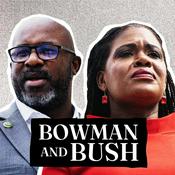186 episodes

Preparing to Serve: Inside Dover's City Council Orientation Process
12/16/2025 | 18 mins.
In this episode of the Dover Download podcast, Deputy City Manager Christopher Parker chats with City Manager J. Michael Joyal, Jr. about the upcoming orientation process for newly elected City Councilors and School Board members. Joyal explains that the orientation is required by the city charter and serves to prepare elected officials to serve as the board of directors for Dover's municipal corporation. The orientation covers essential topics including ethical considerations, finance, legal requirements like the Right-to-Know Law, and New Hampshire's lack of home rule, which limits municipalities to only what state law allows.Joyal discusses how the orientation has evolved to include joint sessions with both the City Council and School Board, fostering collegiality and mutual respect between the two bodies. With five returning councilors and four new members in the incoming council, the orientation provides valuable information for newcomers while serving as a refresher for returning members. The sessions are scheduled for two Thursdays in December. Following the orientation, an inauguration ceremony will take place on Jan. 5, where officials will be sworn into office. Within the first 90 days, a goal-setting session will be held to establish priorities that guide the council's two-year term and inform staff decision-making. Joyal emphasizes that despite the corporate structure, the community remains the primary focus, with all officials serving as stewards of public resources and public trust.In This Week in Dover History, we learn about Dover's oldest hook and ladder company, formed on December 21, 1831, as the Volunteer Hook and Ladder Company and later known as the Lincoln Hook and Ladder Company Number One. The company maintained an annual banquet tradition throughout its existence, with the 80th anniversary celebration in 1911 attracting hundreds of attendees and city dignitaries at the Knights of Columbus Hall. By 1924, it operated the oldest horse-drawn fire apparatus in New England before transitioning to motorized equipment. The company celebrated its 100th anniversary in 1931 and remained one of the state's oldest fire companies for many years.

Major Projects Updates: Henry Law Avenue, and Court and Union Streets
12/09/2025 | 17 mins.
In this episode of the Dover Download podcast, Deputy City Manager Christopher Parker chats with project managers Jamie Stevens and Matt Gibbons about two major infrastructure projects. Stevens discusses the Henry Law Avenue and Payne Street reconstruction project, which was originally designed in 2004 but paused for waterfront development. The project design is now complete and expected to go out to bid in January 2026, with construction breaking ground sometime next year. The biggest change since 2004 is enhanced stormwater management, including a massive underground treatment facility that will be installed beneath the former swimming pool area in Henry Law Park.Gibbons provides updates on the Court and Union streets reconstruction project, which began after Labor Day 2024 with contractor SUR Construction. This complete roadway reconstruction evolved from an original water main replacement project and now includes subsurface utility replacement, new five-foot-wide ADA-compliant concrete sidewalks with granite curbing, and improved traffic patterns. The 5,000-foot Court Street project and 800-foot Union Street section will be completed in phases through late spring or early summer 2027. Notable improvements include reconfiguring the Back Road and Court Street intersection from a Y-intersection to a T-intersection.In This Week in Dover History, we learn about Dennis Bentley, a Dover educator who taught grades 5 through 12 during his 34-year career. Bentley began as a high school English teacher in 1971, later taught at Dover Middle School for 18 years, and served as principal at both Woodman Park School and Garrison Elementary School before retiring in 2005.

Energy Audits and November Meeting Updates
12/02/2025 | 26 mins.
In this episode of the Dover Download podcast, Deputy City Manager Christopher Parker hosts conversations about energy efficiency projects and provides monthly updates on board and commission activities. Parker speaks with the City's Resilience Coordinator, Lexi Merchant, and Facilities Project Manager, Eric Sanderson, about the city's partnership with Energy Efficient Investments to conduct energy audits of municipal buildings and implement energy savings performance contracts. The team discusses how these contracts work, focusing on solar installations and HVAC improvements at facilities like the McConnell Center, wastewater treatment plant, and fire stations, with the goal of achieving budget-neutral upgrades paid for through energy cost savings. Later, Parker is joined by Brian Early of Media Services and Planner Erin Bassegio to review November activities from city boards and committees. Topics include the City Council's work on the Capital Improvements Program, a new ordinance allowing muzzling of dogs deemed vicious under state standards, the groundbreaking for Dover High School's athletic complex, and the School Board's fiscal year 2027 budget process. Bassegio also discusses the Zoning Board of Adjustment's approval of a duplex variance and announces upcoming openings on the Energy Commission.

Lighting Up Dover: Holiday Festivities and Community Collaboration
11/25/2025 | 23 mins.
In this episode of the Dover Download podcast, Deputy City Manager Christopher Parker chats with Christine Sieks and Doug Glennon about holiday festivities and downtown Dover activities. Glennon discusses Communitively's initiatives, including First Friday Shop Local events, the Holiday Stroll featuring hot cocoa and s'mores stations in Waldron Court, Plaid Friday promotions encouraging shopping at local businesses rather than big box retailers, and the Autumn Art Amble, organized by Susan Hanna. Sieks explains the Light Up Dover project, formed by 14 volunteers when the previous organization could no longer continue. The initiative focuses on three main goals: lighting the tops of downtown buildings, creating a mural on the old Earcraft building, and dramatically enhancing the community Christmas tree. The tree lighting is scheduled for Dec. 5, with 40 boxes of ornaments and hundreds of lights. Both guests emphasize the growing collaboration among various Dover organizations including Dover Main Street, the Arts Commission, Dover Doers, and the Holiday Parade organizers. They highlight how different groups are learning to work together rather than separately, pooling resources and coordinating efforts for greater community impact during the 2025 holiday season and planning ahead for 2026.In This Week in Dover History, we learn about Thanksgiving week in 1925, when Dover residents enjoyed holiday dining at establishments like the Magnet Restaurant and Kimball Tavern, entertainment at the Strand and Orpheum theaters, and Ethel Mae Shorey's 10th annual Thanksgiving performance at the Dover Opera House.

Nebi Park Takes Shape: A Waterfront Transformation Update
11/18/2025 | 17 mins.
In this episode of the Dover Download podcast, Deputy City Manager Christopher Parker chats with Jamie Stevens, project manager for Dover's waterfront development, about the significant progress made on the project over recent months. Stevens describes the substantial visual improvements to Nebi Park, including green grass, tree and shrub plantings, sidewalk installations, lighting systems, and the erection of the pavilion building's timber frame structure, which should be weather-tight within a month. The park features multiple distinctive areas designed to connect users with the water, including the Granite Bridge deck area with rustic hand-split granite blocks, an overlook area with an illuminated flagpole and etched city seal, and the Great Lawn sitting area near the pavilion. The understory area offers an urban walkway with a stabilized stone path designed to provide a woodland experience while connecting residents with nature. Stevens highlights the innovative stormwater management systems incorporated throughout the site, featuring approximately six different processes to retain and treat surface water. The project will continue through winter months, with Stevens now transitioning to also manage the Henry Law Park reconstruction project, ensuring seamless coordination between the two initiatives. Both Parker and Stevens express pride in transforming the former recycling center site into what they describe as a game-changing community asset, scheduled for spring 2026 completion. Stevens recently provided a video tour of the site, which can be viewed at https://dovernh.viebit.com/watch?hash=zaq1xQCWYnGGgSC3In This Week in Dover History, we learn about a tragic celebration in November 1856, when Dover Democrats planned a jubilant event atop Garrison Hill to commemorate James Buchanan's presidential election. The centerpiece was a War of 1812 British cannon transported from Portsmouth Shipyard. During the celebration's salute, the cannon fired prematurely, instantly killing shoemaker John Foss and seriously injuring George Clark, who died hours later. The cannon remained on Garrison Hill, fired only once more in 1875, before being moved to the Woodman Museum after repeated vandalism.
More Government podcasts
Trending Government podcasts
About Dover Download
Listen to Dover Download, Strict Scrutiny and many other podcasts from around the world with the radio.net app

Get the free radio.net app
- Stations and podcasts to bookmark
- Stream via Wi-Fi or Bluetooth
- Supports Carplay & Android Auto
- Many other app features
Get the free radio.net app
- Stations and podcasts to bookmark
- Stream via Wi-Fi or Bluetooth
- Supports Carplay & Android Auto
- Many other app features


Dover Download
download the app,
start listening.







































